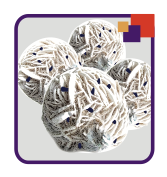 |
| A depiction of Edge's polymer-based microparticle for delivering neurological drugs--Courtesy of Edge Therapeutics |
Edge Therapeutics is deploying drug delivery to improve the standard of care for treating ruptured brain aneurysms, and hopes to receive up to $115 million via an IPO on the Nasdaq, for which it has filed with the SEC.
Its lead candidate (EG-1962) improves on oral nimodipine. The reformulated version of the generic active ingredient (classified as an L-type calcium channel blocker) is delivered straight to the site of the internal bleeding in the brain from the ruptured aneurysm via an external ventricular drain.
In its Phase II trial lead candidate EG-1962 beat oral nimodipine in improving clinical outcomes for patients with aneurysmal subarachnoid hemorrhage.
Targeted, localized delivery avoids the side effects of systematic nimodipine administration, most notably low blood pressure, which can exacerbate the condition, Edge says in its SEC filing. As a result its delivery method results in higher doses and sustained concentrations of nimodipine to the brain over 21 days.
All patients who suffer from an aneurysmal subarachnoid hemorrhage (or about 35,000 Americans per year, 75% of whom die or suffer permanent brain damage within 30 days) are supposed to receive nimodipine.
But only half currently require an external ventricular drain during the course of treatment, and the filing warns that "other technologies may become available that can monitor intracranial pressure without the need for an EVD, which would require physicians to put in place an EVD solely to administer EG-1962 and thereby substantially increasing the additional level of invasiveness needed to deliver EG-1962 through our initial route of administration."
So the company is developing intracisternal and lumbar administration techniques for EG-1962 in addition to the intraventricular route. "Intracisternal administration involves placing a single administration of EG-1962 into the basal cisterns of the brain during surgical repair of the aneurysm. Lumbar administration would entail a single administration of EG-1962 into the CSF (cerebral spinal fluid) via a catheter in the lumbar region of the back," the filing explains.
The additional administration routes would enable full coverage of aneurysmal subarachnoid hemorrhage patients. The intraventricular version of EG-1962 is supposed to kick of its Phase III trial in mid-2016, while the intracisternal version has completed animal testing, and the lumbar version is in the formulation development stage.
There are two other candidates in the pipeline. EG-1964 contains a pancreatic trypsin inhibitor known as aprotinin (currently marketed by Nordic Pharma as Trasylol) to manage recurrent bleeding following the initial trauma. It is supposed to be delivered by neurosurgeons directly to the site of injury.
Meanwhile, "EG-1963 is being developed to reduce bleeding complications during and after complex surgical procedures often associated with large surface-area bleeding such as cardiac, liver, orthopedic or trauma surgery," the filing says. It is also designed to deliver large doses of the active ingredient (antifibrinolytic agents) locally in order to reduce side effects.
All candidates are based on the company's Precisa microparticle delivery platform. The biodegradable, PGLA polymer microparticles containing molecules of nimodipine are about 70 microns in diameter, "which is small enough to allow easy administration through an EVD, yet large enough to prevent macrophages from carrying the microparticles away from the site of injury," according to the filing.
Following controlled and sustained diffusion of the drug from the polymer-based Precisa matrix, the microparticle degrades. Each candidate will be delivered slightly differently. For example, the company is considering delivering EG-1964 using a microparticle shaped like a filament with a diameter of less than 5 millimeters.
Edge reported a net loss of $13.7 million in 2014. R&D spending was $8.5 million. As of June 30, 2015 it had $58.5 million in cash on hand.
- here's the filing
- here's FierceBiotech's take